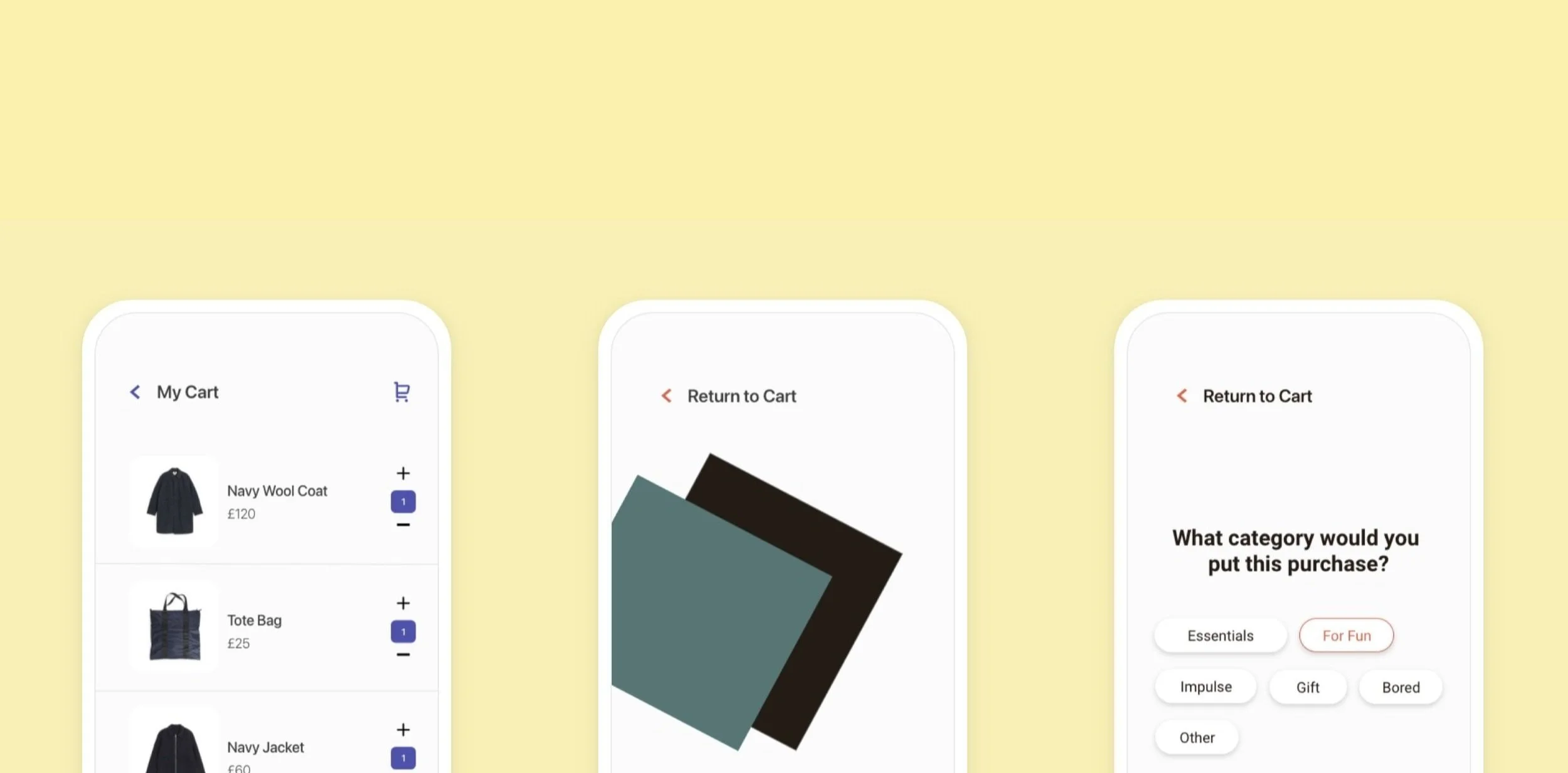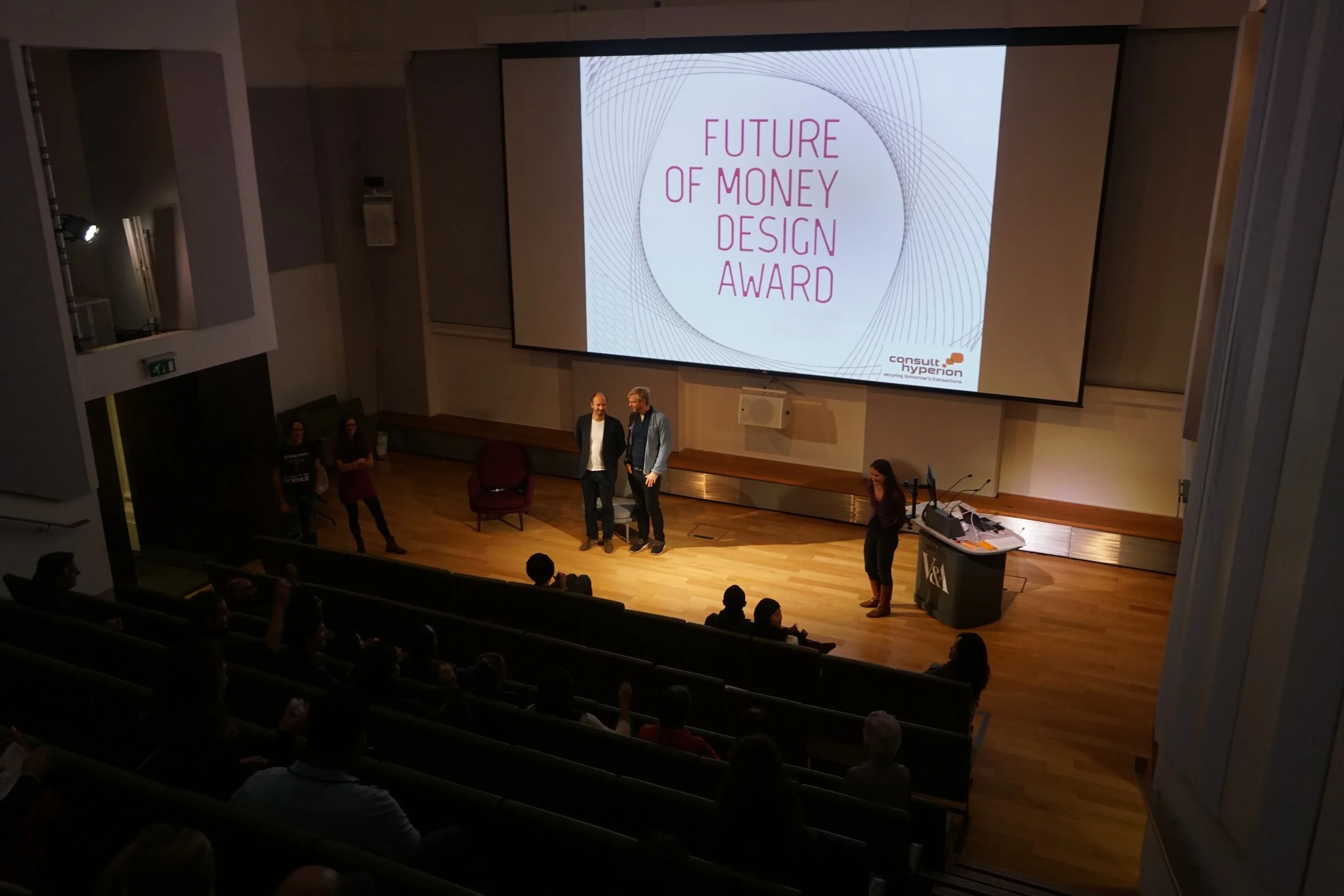PayDelay Concept
Overview: This project was created as part of an entry for the Future of Money 2022 design competition and was amongst the 10 selected winners for additional funding and the opportunity to exhibit the project at LCC. PayDelay is a reimagined buy-now-pay-later interface concept to make Gen Z users reevaluate their purchases by increasing awareness of their outstanding payments and the long-term impacts of not paying their debts to avoid being contacted by overspending debt collecting agencies.
Timeline: Feb - Apr 2022 (2 months)
My Role: User Research, Wireframing, Prototyping, UI Design & User Testing
For the Future of Money design competition, we invite you to use future-oriented creative methods and create a project which makes a change to an existing financial system. Consider how this system operates, and why. Design a modification to the system, its’ communication, or how it is distributed.
The Problem
Buy now pay later services are leading Gen Z to overspend beyond their financial limits, resulting in them being contacted by debt collecting agencies. This leads to the question of how communication systems for BNPL services can be reimagined.
The Solution
Using information visualisation to increase awareness of users’ outstanding payments and add accountability for their new purchases.
Information Visualisation of Payments
Adding a questionnaire to make users reevaluate their new purchase and avoid the issue of mindless purchasing.
Accountability of Purchase
Increasing awareness of the consequences of not paying timely payments and understanding the financial impacts this can have on the user’s long-term credit history.
Adding Risk Awareness
Process
User Interviews
In order to gain a deeper understanding of what users’ attitudes and experiences are when using BNPL services to make a new purchase, I decided to conduct interviews with 10 participants. The aim of conducting these interviews was also to get a good understanding where users think the issues stem from and how they can be improved when using BNPL services in a more healthy way.
Some of the questions asked:
Into questions related with lifestyle choices habits such as shopping patterns
What’s your relationship like with using BNPL services to make purchases?
Why do you keep using BNPL services? - why is it important to you?
What is the biggest pain point related to using BNPL services?
Categorising Data + Insights
The next step was to conduct an affinity mapping exercise to synthesise the qualitative research data and find similar themes. The affinity mapping exercise allowed the data to be easier to grasp and bring insights and connections to light that were not immediately apparent before.
Key Insights Affinity Mapping
Lack of debt awareness
Users feel they are often unaware of their outstanding payments which can encourage them to make a new transaction.
Lack of risk awareness
Users think the current express checkout process for bnpl services can be more tempting and there is currently a lack of risk awareness when making a transaction through bnpl making the transaction feel less significant for users compared to debit card payments.
Mindless purchasing
The current communication system for bnpl does not visually let the user see the after-effects of making a new transaction compared to paying with direct debit which leads users to make mindless purchasing and being less responsible.
How Might We
Make buy now pay later users more accountable for their next purchase and reduce mindless purchases.
Attending FoM Workshops & Seminars
During the Future of Money program, there were many events and workshops which were insightful towards providing knowledge about the future of our currency and the changes in the current financial systems.
The workshop sessions were also useful in ideating and exploring different concepts for my own project proposal. During this time the emphasises was to gather knowledge and experiment with different concepts for the Phase One submission.
Phase One Concept Ideation
The next step was to start conceptualising different ideas and create low-fidelity sketches for the Phase One concept submission in April 2022.
The few creative workshops and seminars I attended at London College of Communication helped me brainstorm and explore different ideas to solve the problems identified that will also be inline with the user’s needs.
Medium Fidelity Wireframes
Using these wireframes, the next step was to gather feedback from my users to see what areas could be further improved before the phase one concept submission.
Usability Testing + Feedback Tutorials
During this stage the emphasises was on gathering user feedback and making notes to make any iterations before the Phase One submission. The goal behind having these feedback tutorials from lecturers and my users was to identify any areas which can further improved and mitigate any pain points users had with the concept.
Insights led to small revisions to the final checkout process to make the final designs as clear and concise for the user.
Final Concept Screens
Exhibition Launch
PayDelay was amongst the 10 projects to be selected for the exhibition and receive additional funding. The exhibition was displayed at the London College of Communication in November 2022. Link to Supra Systems Studio’s website for further project exhibition information can be found here.
Reflections + Key Learnings
In summary, this project was the first time stepping out of my comfort zone as it was for a design competition open to all UAL students. One of the main challenges faced during the project was working with time limitations and being able to create a concept on time which addresses the user problems. In order to combat this planning was important, especially through apps like Notion to meet the deadline. Since design is an iterative process next steps would include conducting more user testing to make further iterations.
Some key learnings for me:
Gathering qualitative data is crucial: Putting an emphasises on gathering qualitative data through interviews was crucial as it help to better understand the user’s pain points and their needs.
Importance of workshops for solving problems: Attending creative workshops and additional seminars can be really useful especially for the ideation stage as it helps come up with different ideas out of the box to solve the user problems at hand.














